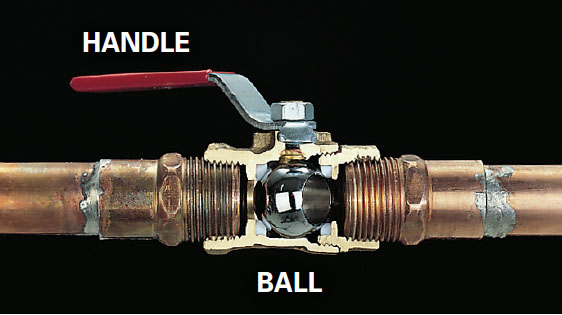
Your main shutoff valve is one of the most important disaster-stoppers in your home. When a pipe leaks or bursts, this valve lets you shut off water flow to your entire home. Take a few minutes to locate and test to make sure you can close it. In most cases, you’ll find two valves—one before the water meter and one after. Closing either of them will do the trick. If you have a well, shut off the electrical switch for the well when you leave for an extended period so it won’t pump any water while you’re gone.

Ball valve The stainless steel ball almost always rotates smoothly to shut off the water. But just to be sure, give the handle a quarter-turn. Then turn on a faucet to see if the water is off.
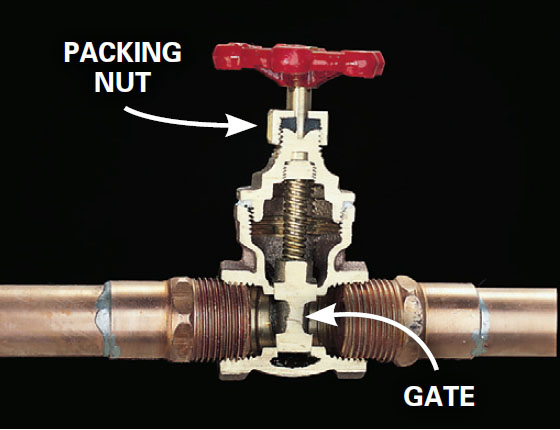
Gate valves Most common in older homes. The valve closes when a wedge-shaped brass gate is lowered into a slot.
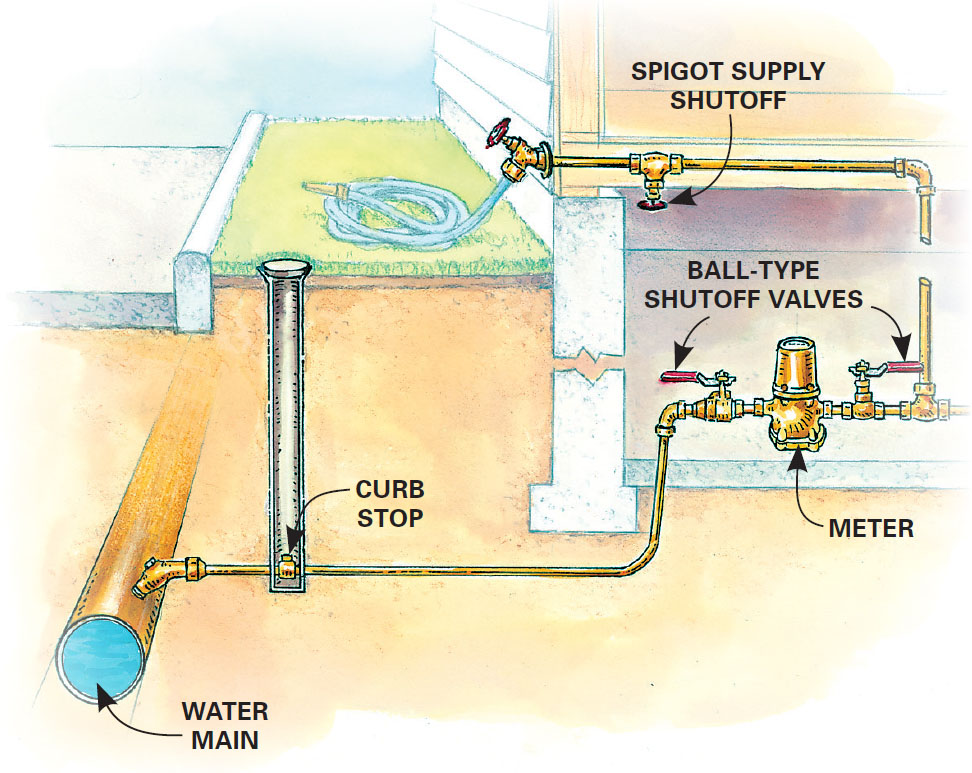
Indoor shutoff In colder climates, the main water shutoff is typically in the basement.
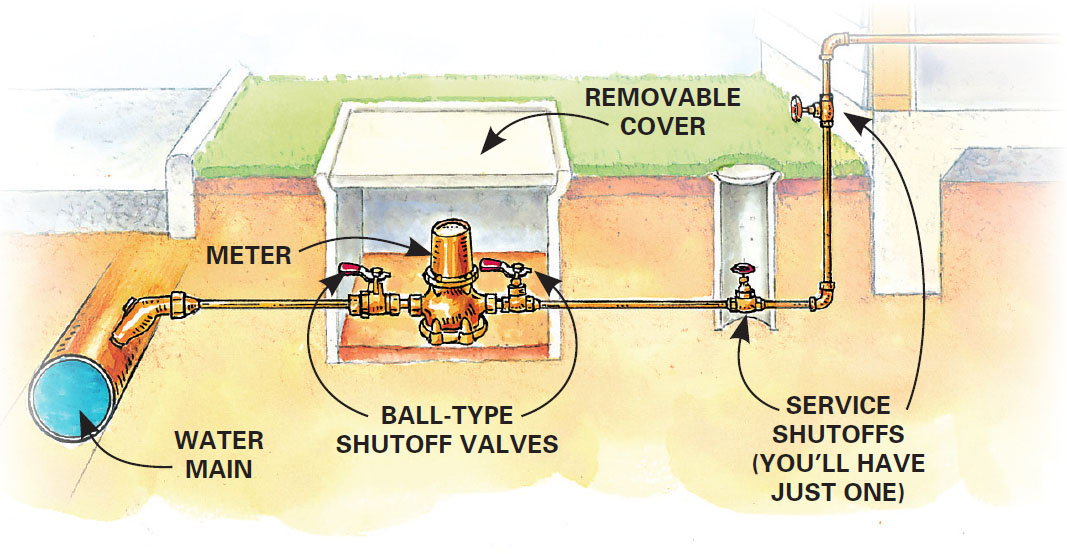
Outdoor shutoff In warmer climates, the main water shutoff is typically outside, attached to an exterior wall or in an accessible underground box.
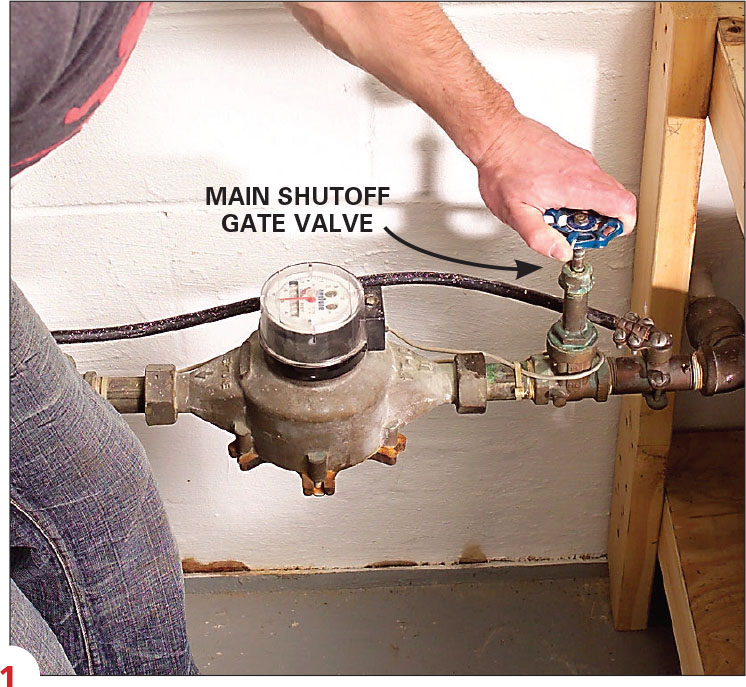
1. A gate valve is prone to getting stuck open, closed or somewhere in between—especially after years without use.
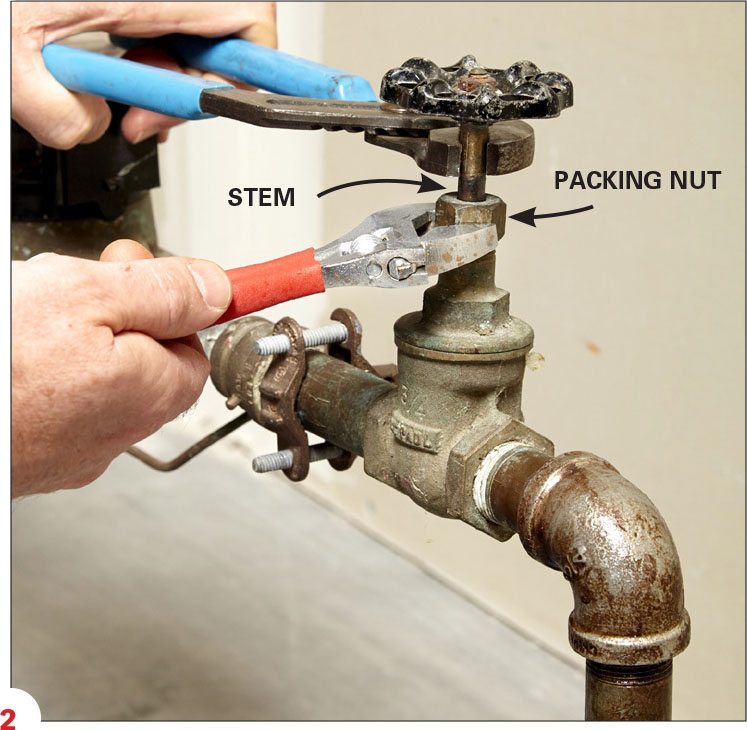
2. To close a gate valve, turn the handle clockwise. If you can’t turn the handle, loosen the packing nut just a little. But be sure to hold the handle in position while you turn the nut. If the handle turns as you unscrew the nut, you risk breaking the valve. A shot of lubricant or penetrating oil may also help. Then try again.
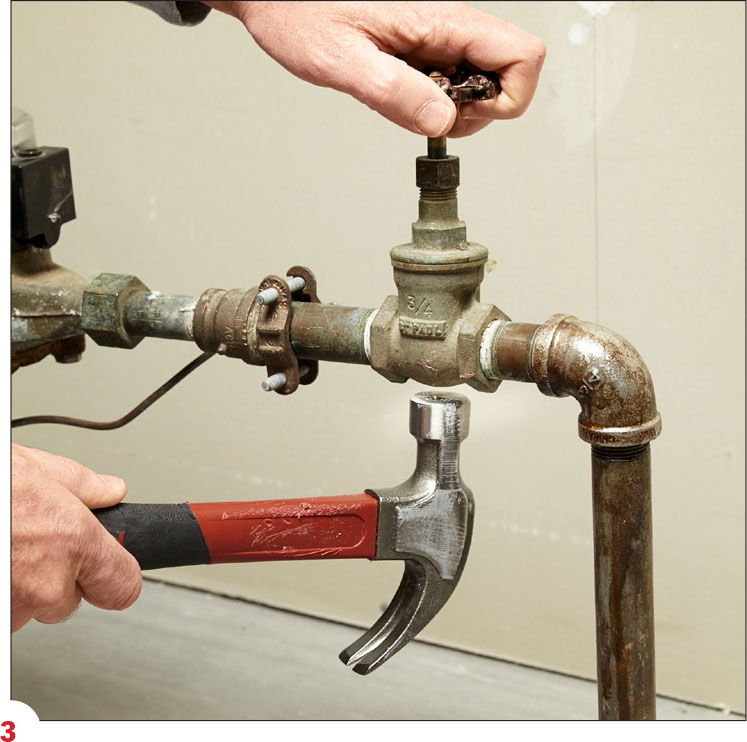
3. Reopening a stubborn gate valve is more risky than closing it; you’re more likely to break internal parts and could end up without running water. If the valve is stuck closed, tap it with a hammer gently (Photo 3). When the valve opens a little, stop for a few minutes. That allows water pressure on both sides of the valve to equalize, instead of pressing against one side and locking the valve in place.